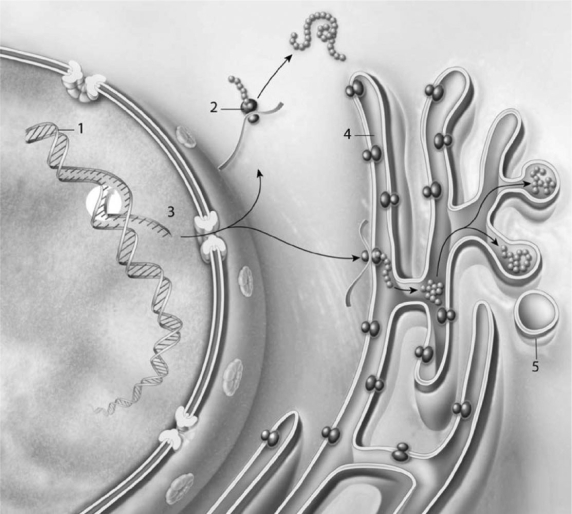 Figure 3-5 Protein Synthesis
Figure 3-5 Protein Synthesis
Use Figure 3-5 to answer the following question:
-Structure #4 is where the protein
Definitions:
Motility
The capability of cells, organisms, or substances to move actively and spontaneously, often as part of physiological processes.
Digestive Tract
A series of hollow organs joined in a long, twisting tube from the mouth to the anus, where food is broken down and nutrients absorbed.
Vagus Nerve
The tenth cranial nerve, which is a long and complex nerve extending from the brainstem to the abdomen, involved in controlling the heart, lungs, and digestive tract, as well as mediating visceral reflexes and sensations.
Sympathetic Innervation
Part of the autonomic nervous system that generally stimulates the body's fight-or-flight response, increasing heart rate and blood flow, among other functions.
Q1: The phosphate "head" of a phospholipid is<br>A)
Q22: What does the quote "The high CES-D
Q37: The cytoplasmic division that forms two daughter
Q45: The layer marked A is the<br>A) stratum
Q52: When a person receives intravenous fluids to
Q57: The chemical cochicine,from a flowering plant,blocks the
Q62: Identify the structure labeled #5,a component of
Q75: The fact that a single defective protein
Q111: Movement in the anterior-posterior plane that decreases
Q130: In anatomical position,when the palm is moved